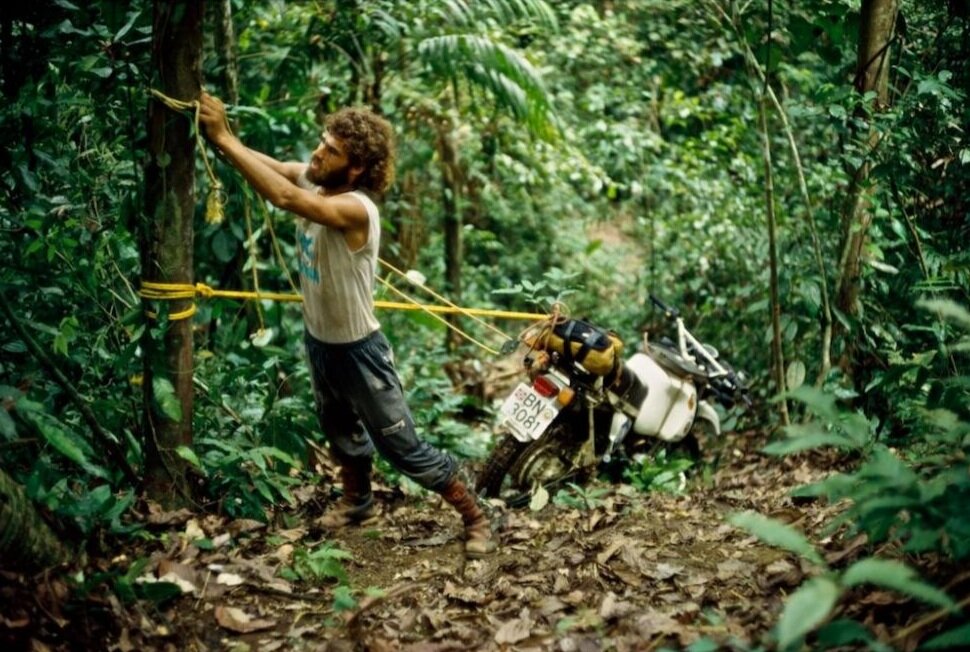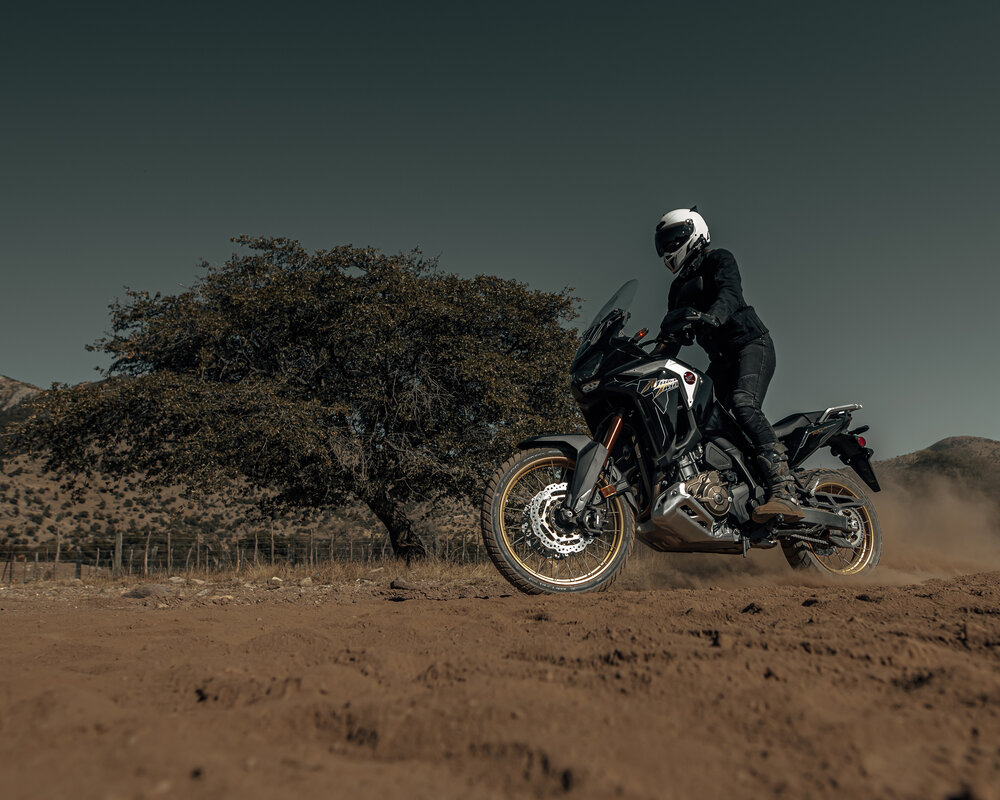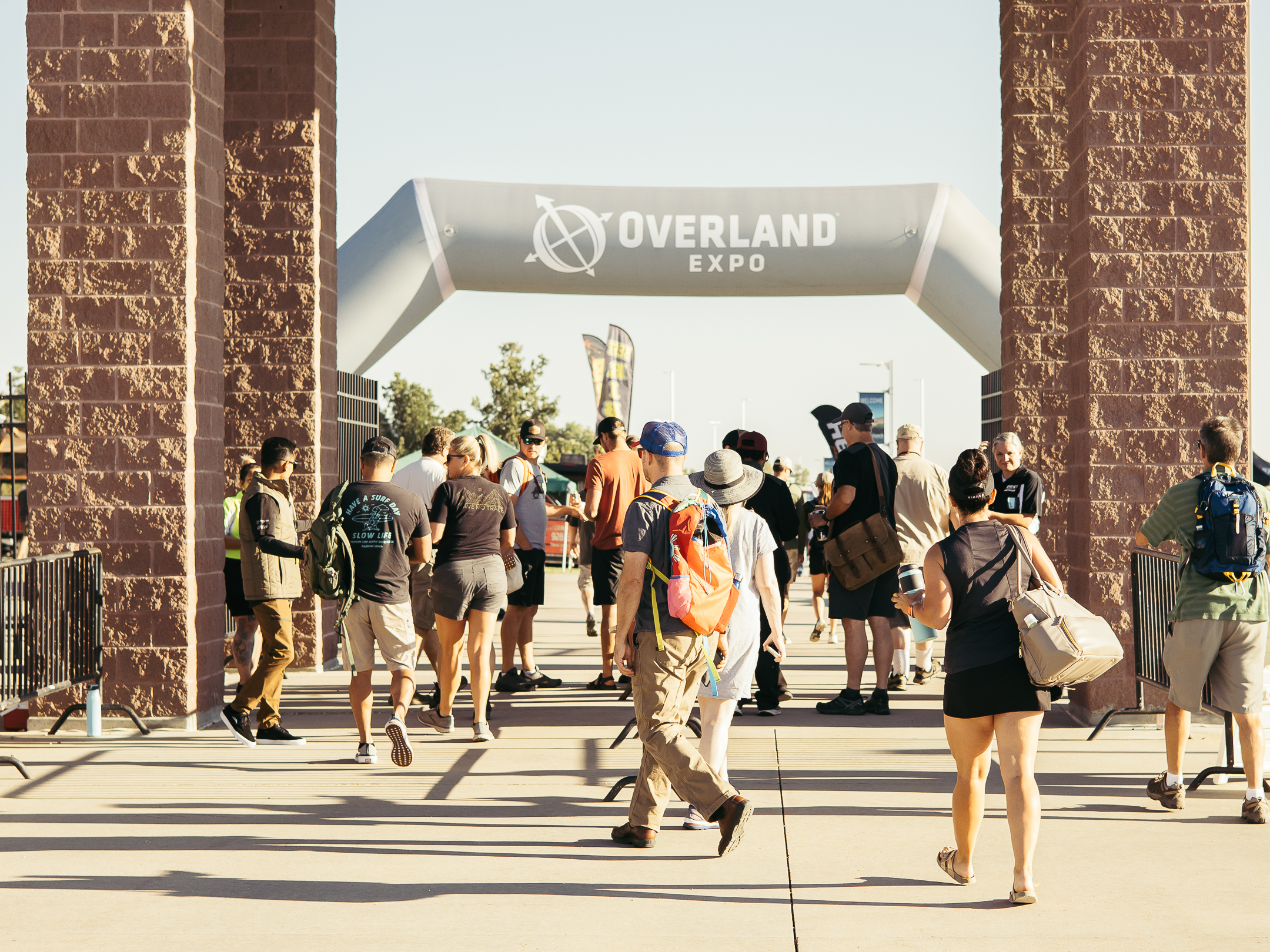Requiring little more than a functional motorcycle and an eye for exploration, adventure motorcycling is riding in its purest form. Often associated with big motorcycles sporting knobby tires, adventure riding simply means venturing into the unknown on two wheels.
There are a few things that separate adventure riding from other forms of motorcycling. Though your lane-splitting commute through rush hour traffic may feel like an adventure, ADV riding is different. To be on an adventure ride, you need to be self-reliant and focused on exploration. Just like overlanding, the journey, rather than the destination, is what it’s all about. Whether you hit the road for an afternoon or a decade, your bike is the tool, and your experience is the goal.

The Adventure Motorcycle
The motorcycle is the key to adventure. Your bike doesn’t have to be fancy, but a capable machine that can withstand the rigors of extended exploration is a prerequisite. There isn’t a one-size-fits-all motorbike, so it’s most important that you select one you feel comfortable riding.
Adventure motorcycles can range in size and engine displacement, but they need to be reliable and capable of carry you through the tough stuff and keep you rolling on your journey. Don’t feel like you have to get a brand-new motorcycle to start adventure riding; a quality used bike is a great choice when you’re starting out. Whether you choose a dressed-up dual sport or a full-blown adventure rig, you’ll want your bike to be off-road capable and able to handle whatever sort of terrain you choose to ride on.

When to Choose a Smaller Bike
Though you might sacrifice power and long-haul comfort, you’ll make up for it as you nimbly navigate trickier trails on a smaller motorcycle. Smaller adventure bikes have the advantage of inspiring confidence when your feet can touch the ground, and you can easily lift your bike in the event of a tip-over.
Smaller displacement motorcycles are often less expensive than their bigger-bore counterparts, both to purchase and maintain. That means saving money on the bike and repairs, leaving you more money to fuel your adventure. Smaller bikes tend to shun the bells and whistles, like fuel injection, electronic suspension, and glitzy TFT displays. Though you might miss beaming your Spotify account through your motorbike’s dashboard, riding without all the tech can lead to a more pure adventure experience. Also, fewer electronics means simpler diagnostics when something goes amiss.

When to Choose a Bigger Bike
Bigger ADV bikes deliver plenty of power and often come equipped with touring features that are great for long-haul adventuring. Though they’re a bit more difficult to ride off-road and require heavy lifting when they hit the ground, big bikes are generally more comfortable for longer distances.
Larger adventure bikes are great for long rides and overland exploring. Heavier and sometimes harder to navigate through challenging terrain, one main advantage of big adventure bikes is the increased carrying capacity for your camping and travel gear. Bigger also sometimes means higher-tech, so if you’re keen on cruise control, tire pressure monitoring, and other rider aides, perhaps a larger ADV bike is for you.

Adventure Riding Gear
Because you’re fully exposed to the elements when riding your motorcycle, having good gear is essential. Your gear not only protects you from rain and heat, but your riding gear is your first line of defense in case of a casual tip-over or serious accident.
READ MORE: Editors’ Choice: Adventure Motorcycle Camping Gear
Even if you bought your adventure motorcycle with your leftover lunch money, skimping on riding gear is never a good idea. Every time you head out, bring your helmet, jacket, and boots to keep you protected. Plus, you’ll want rain gear and layers to keep you out of the elements.
- Helmet: Absolutely one of the most essential pieces of riding gear, don’t even consider heading out for a ride without a full-face helmet. You’ll want your helmet to fit well and be free from cracks and damage.
- Jacket & Pants: Adventure gear needs to be durable, comfortable, and protective. Padding and waterproofing are critical components of your riding suit that can be either built-in or worn separately.
- Boots: Even smaller adventure bikes weigh hundreds of pounds, and protecting your feet is essential. Select motorcycle-specific boots that are sturdy and comfortable for all-day riding.

Adventure Motorcycle Camping Gear
One of the best parts of adventure riding is heading out for days at a time. Because getting off the beaten path is one of the goals here, you’ll want camping gear that lets you rest well under the stars. For shorter trips, you can get by with a simple setup, but a complete camping kit is a lovely luxury for longer adventures.
Carrying capacity on the motorbike is always at a premium, so set yourself up with compact gear that fits in your panniers or duffle bag. Think backpacking, rather than car camping, as you plan your off-road overnight gear. Having plenty of water and a bedroll is the minimum to get by with, but cooking equipment and a tent sure make things a little nicer out there in the long run.

Knowing what to pack and how to carry everything while adventure riding is no easy feat. As you ride more, you’ll refine your camping kit and adjust your gear to perfectly suit your needs. Start out closer to home on shorter overnight trips to practice for the long adventures.
Tools and Skills
More important than almost any other part of your adventure kit, having the tools to fix your bike and the skills to get yourself out of a sticky situation is truly the key to successful adventure motorcycling. That said, you don’t need to be a master mechanic or a Baja champion to be a good adventure rider.

Your toolkit should go with you wherever you ride. At the very least, you need a tire repair kit and some basic hand tools to do maintenance and make trailside repairs. Assemble your toolkit with wrenches and hexes size-specific to your bike. Don’t forget to pack zip ties, baling wire, SteelStick, and duct tape as well— you’ll be surprised how often they come in handy when you have to fix something on the fly in the backcountry.
Practice Makes Perfect
All aspects of adventure motorcycling take time to master, but with practice, you’ll gain the skills you need for a lifetime of adventuring. From off-road riding to maintenance and repairs, taking the time to learn will save you effort and stress during real-world situations. Build your confidence incrementally, rather than getting in over your head all at once. Practice your riding skills close to home and your wrenching skills, such as tire changes and basic maintenance, from the comfort of your driveway before you have to put your skills to the test in the field.

Adventure motorcycling is, without a doubt, one of the best ways to spend your time, see the world, and have a blast. Most importantly, adventure riding doesn’t have to be an expensive, esoteric pursuit if you go about it wisely. Start by setting yourself up for success with a used motorcycle, some quality gear, and a training class appropriate to your level. Over time, you’ll find yourself off the beaten path with confidence, exploring the world and realizing that the best adventures are just a throttle twist away!


